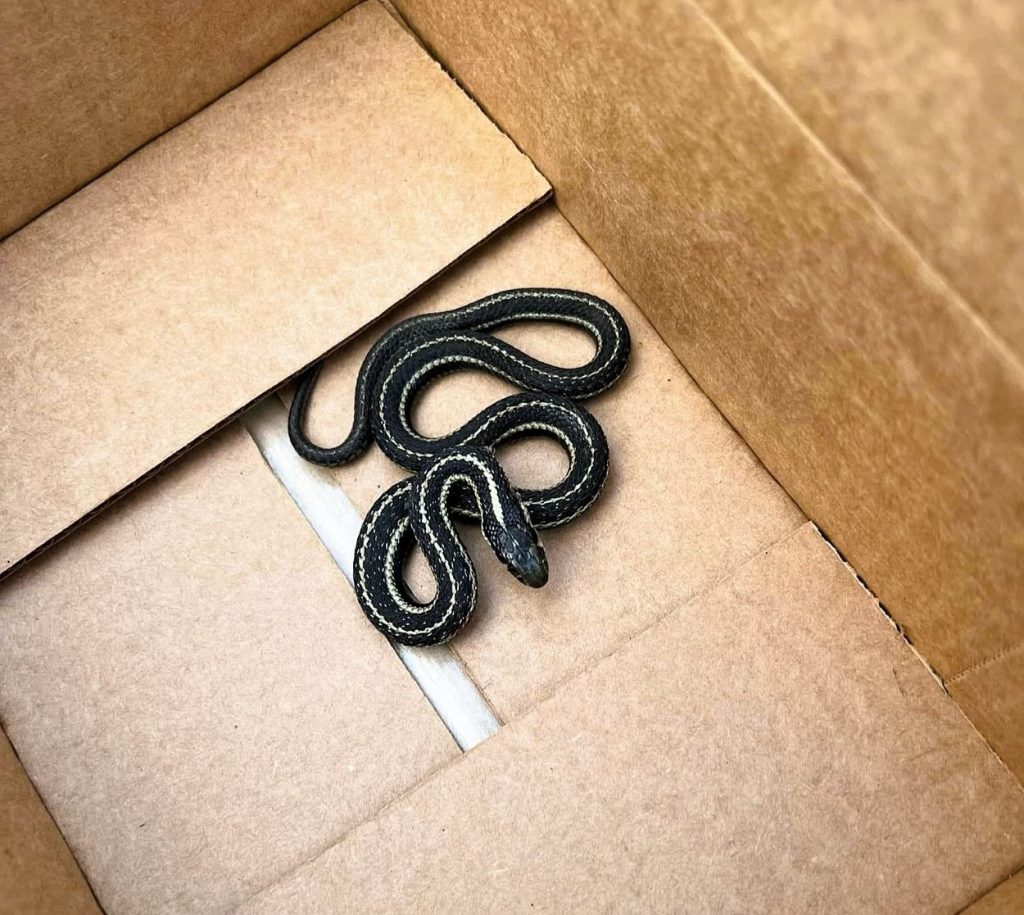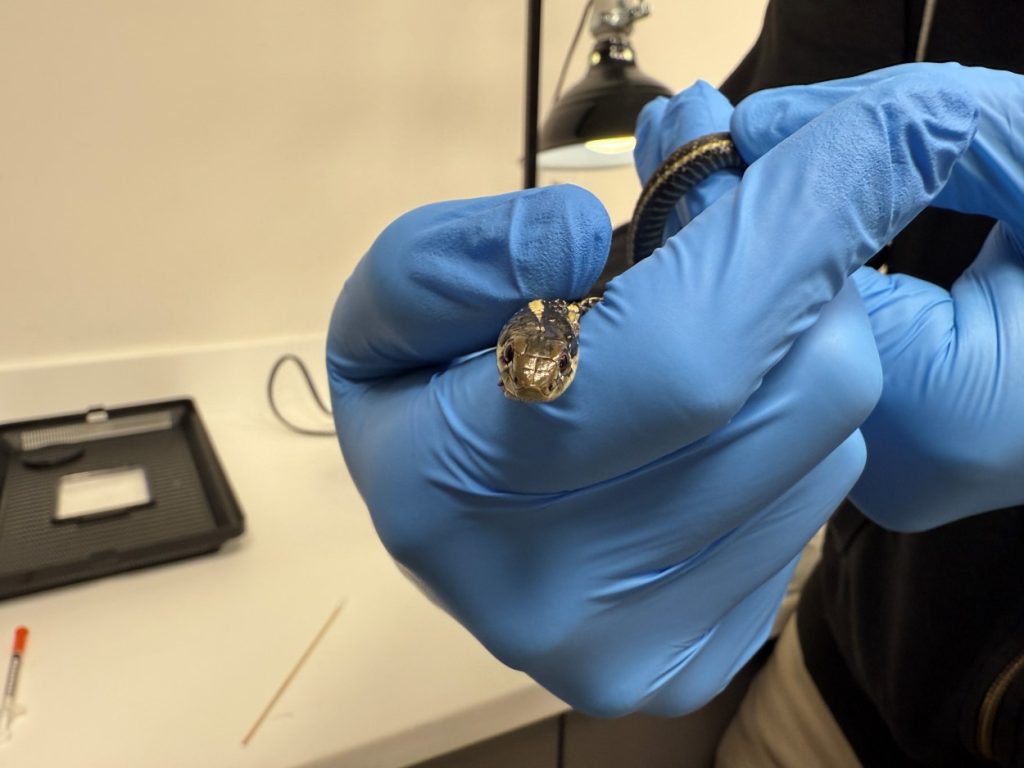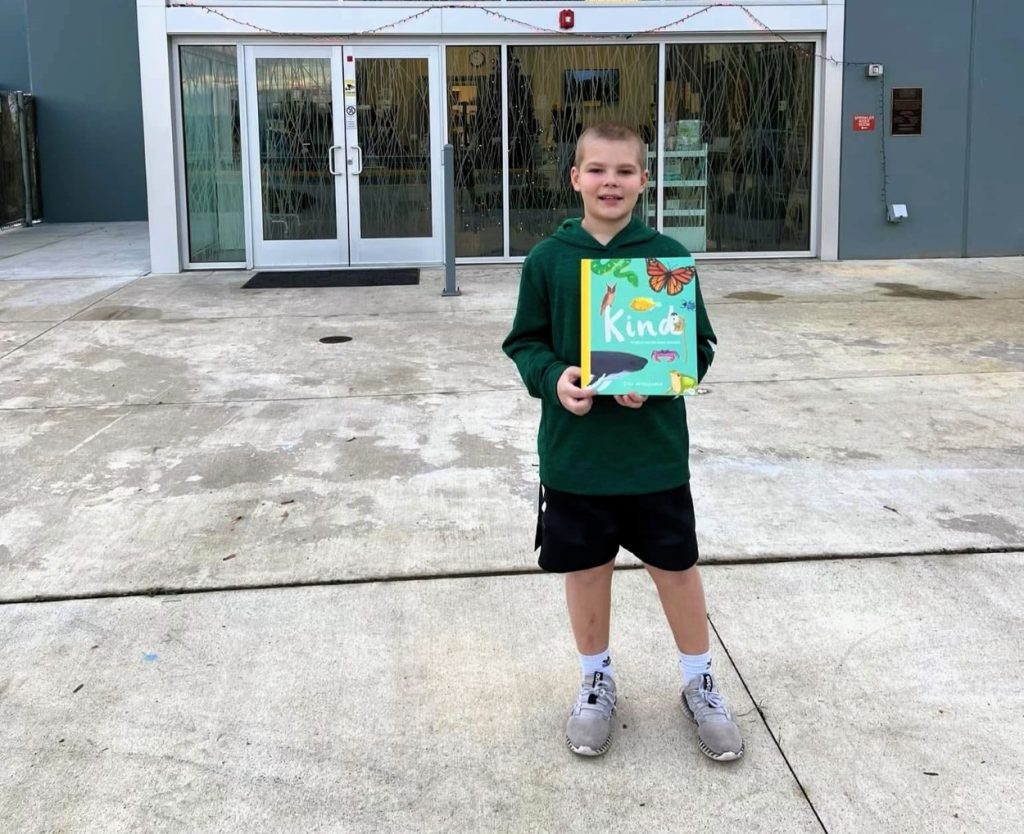SNOHOMISH—Boston Divito, Little Cedars Elementary School student, saw a troubling sight on the playground back in December; a few of his classmates were abusing a Garter Snake who had emerged from hibernation to bask.

The students were stomping on the snake, severely injuring the reptile when Boston intervened – standing up to the bullies, informing the school faculty, and calling his mother to transport the injured animal to the nearest wildlife rehabilitation center.
When the Divito family brought the snake to PAWS Wildlife Rehabilitation Center, right off State Route 9, it had been so badly injured that its bones, and bottom jaw, were protruding out of its skin.
Dr. Nicki Rosenhagen, PAWS veterinarian, sedated the snake, trimmed off the exposed bone and added a suture (stitch) to its jaw effectively savings its life.

However, something much more curious was awry. When conducting surgery, veterinarians working at PAWS noticed an abnormality on the snake’s skin, which tests indicated were a rare fungal disease called Paranannizziopsis, of which not much is known among the scientific community.
PAWS partnered with Washington Fish and Wildlife, U.S. Fish and Wildlife, veterinarians and biologists, and researchers nationwide to begin a treatment program for the disease – the first time in U.S. history the disease has ever been treated, according to Dr. Rosenhagen.
“It started out as this little thing – saving a snake, which is great – but then it turned into this really important medical discovery, as far as identifying this disease and then effectively being able to treat it,” said Dr. Rosenhagen. “On a bigger scale this may be something that we can share with the world, that we were able to treat this and hopefully support people in the future if they encounter what we did and have success treating this fungus.”
Dr. Rosenhagen has submitted a proposal to speak about her findings at the 73rd Annual International Conference of the Wildlife Disease Association in Vancouver, Canada but has not heard back yet. Her team will also likely publish their findings in a scientific journal as well.

The fungal infection was unrelated to the children’s abuse. Dr. Rosenhagen suspects that the snake emerged out of hibernation because of its fungal infection, seeking warmth to bolster its metabolism and, by extension, its immune system.
Reptiles, like Garter Snakes, traditionally hibernate in the winter in a process called “brumation.” Being cold-blooded animals who rely on their environment for warmth, hibernation, especially in colder climates like Washington, allows the snake to reduce its metabolism and conserve energy. Garter Snakes do this from October through April, often finding dens in rocks or underground and sometimes bundled up with other snakes for warmth.
The hibernation tendencies of Garter Snakes are also why this fungal disease has been so rare to identify and treat over the years.
Paranannizziopsis is different, but closely related to, Snake Fungal Disease (SFD) which has been a serious threat to wild snake populations in the United States and Canada with some populations experiencing a 50% decline in the last year, according to the National Library of Medicine.
At this point it is unknown for certain whether Paranannizziopsis is fatal, Dr. Rosenhagen informed the Lynnwood Times, but its close relationship to the very deadly Ophidiomyces makes it very likely it is. At the very least its symptoms – reduced activity – could be directly responsible for the snake’s ability to properly care for itself, which could lead to death.
Incidents of fungal infections in snakes have steadily increased over the years, according to the Washington Department of Fish and Wildlife, likely exacerbated by the movement of captive snakes, the Reptile and Amphibian Conservation suspects.
Snakes infected with SFD, and closely related Paranannizziopsis, are highly contagious to other snakes in the environment but there are no known cases of a snake transferring the infection to humans or other animals.
Garter Snakes are especially important to Washington’s ecosystem, controlling the populations of pest species like slugs and rodents, while also providing nourishment for mammals, birds, and other snakes resulting in a biodiverse ‘food web.’
The injured Garter Snake Boston Divito had the courage, and empathy, to save on December 9 was released back into the wild on Wednesday, April 9, infection free thanks to the innovative treatment of PAWS and its partnerships.

Though the snake was rehabilitated, and treated, within two months of being brought in by Boston and his family, PAWS intentionally waited until Spring, when the weather was beginning to warm, to reintroduce the snake.
What may result from one child’s bravery and compassion towards an animal’s life could result in countless snakes’ lives saved in the future.
“We at PAWS are super grateful that Boston intervened and saved this little snake because he most certainly would have died without him stepping in,” said Dr. Rosenhagen. “Honestly, it’s really heartwarming and really rejuvenating for us, who work in this field, who see a lot of intentional and unintentional cruelty to animals, to see someone step in and stand up to his schoolmates to do the right thing. But not only did he save this little snake, he may have helped us save a lot of animals in the future.”
Boston’s family originally had plans of visiting Palm Springs for Spring Break, but he pleaded with his parents to postpone the trip so that he could attend the reintroducing of the snake back into the wild. His parents, including his father, who has a phobia of snakes, were right there by his side showing his son support.
The Garter Snake was released back near Little Cedars Elementary, though on the other side of the playground in the greenery. Dr. Rosenhagen informed the Lynnwood Times that reptiles have high sight fidelity so need to be released back into the environment they came from, but also when dealing with a disease which little is known it’s important to release an animal back where they were found to avoid potential cross-contamination.
“He was negative in all of our test results but when dealing with a disease that we don’t know much about we can’t be 100% certain there isn’t something internal that might manifest later,” said Dr. Rosenhagen. “So, when dealing with disease that we’re just learning about the last thing we want to do is release him in a brand-new location and unintentionally spread it.”
Still, she’s confident the abusive situation will not repeat. As the weather warms up in Washington the likelihood of the snake seeking warmth on the playground concrete reduces, but also Principal Anne Nielsen, of Little Cedars Elementary, spoke to the children involved in the incident and how Boston did the right thing.
PAWS plans to release a second Garter Snake, which was also successfully treated for Paranannizziopsis, back into the Billy Frank Jr. Nisqually Wildlife Refuge later today.
Author: Kienan Briscoe










2 Responses
Hello! I am Boston’s mom and also a teacher at Little Cedars elementary. I am wondering if there is a way to edit this article? The current principal at Little Cedars is actually Anne Nielsen. I would love to share the article with our school district but wanted to see if that could be changed. Becky Brockman actually retired a few years ago. Thanks!
CORRECTED 🙂